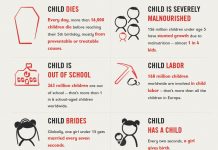Top B-schools like Wharton and Harvard are seeing the value of impact investing and getting their skins into the game.
Wharton’s MIINT program, for instance, is a year-long experiential lab designed to give students at business and graduate schools a hands-on education in impact investing. Students choose a social enterprise, study its value proposition and truly understand its impact. At the end of the program, student teams pitch for a potential impacting investment of up to $50K. Judges include Bridges Ventures partners and higher-ups from Bank of America, Merrill Lynch, and Goldman Sachs. “This is not unlike creating an investment fund,” Jacob Gray, who helps run the program.
Harvard in the Fall of 2016 began offering an impact investing course for the first time in its SEI program. Among the many topics the course explores is a recent form of innovation called the Social Impact Bond (SIB) or Pay for Success (PFS) which aims to “attract private money in the service of the public good.” Through the case studies and material, students will get a hands-on feel for dealing with SIBs and receive a useful framework for dealing with their decisions as future impact managers.
Times are changing and developments like these are significant. As more young people pursue internships, conduct research, and get involved, we see increasing proportions of financial portfolios transitioning to impact-focused funds.
More on Forbes’ coverage (June 2016).







